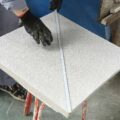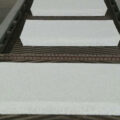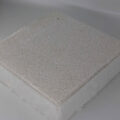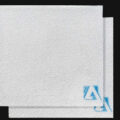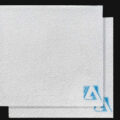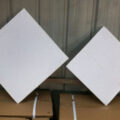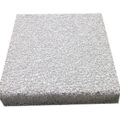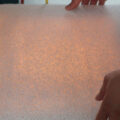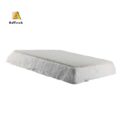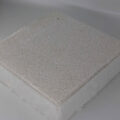In the late 1970s, the United States made a sponge-like ceramic foam filter (CFF) made of alumina and chromium oxide. CFF filter for molten aluminum not only has good purification technology, but also is easy to use. The initial pressure difference through the melt is only 100-150mm, and once it passes, it only needs to maintain a pressure difference of 2-10m. The principle of foam ceramic filtration and purification is the same as that of ceramic tube filtration. CFF Filter for Molten Aluminum is a deep filtration mechanism and has a higher porosity (80% to 90%) than ceramic tubes. Therefore, CFF Filter has a large flow capacity and is suitable for continuous casting and continuous rolling production.

Filtering with foam ceramic filter is currently the most effective way to remove inclusions in aluminum melt. In recent years, some new technologies for purifying molten aluminum in domestic and foreign research plants, such as vacuum dynamic processing, ultrasonic continuous degassing purification and corundum ceramic filters, have received very good results, but these process methods are more complicated and costly. , It is difficult to widely promote in the industry. The metal filter cloth used by low-end customers can only remove the large inclusions in the aluminum alloy melt, but the inclusions below the micron level cannot be removed, and the metal filter will also pollute the aluminum alloy. The use of foam ceramic filter plates can filter out small inclusions and significantly improve the mechanical properties and appearance quality of the product.
The ceramic foam filter for molten aluminum is installed in the CFF filter box between the furnace mouth and the shunt plate. The closer the filter box is to the distributing launder, the better. The reason is that this can shorten the flow distance of the molten aluminum after filtration and reduce or avoid the re-generation of oxidation. The molten aluminum flows from the furnace mouth through the filter box, and then flows into the splitter plate through the launder. When the filter device is started, the drop before and after the melt filtration is about 30mm. With the extension of the filtration time, the inclusions on the surface of the filter plate and the hole wall increase, the filter flow decreases, and the difference between front and back increases. When the casting is completed, the drop increases. To 50-100rm. The selection of the filter plate first depends on the filtration accuracy. Generally, a pore size of 10 holes/cm can meet the requirements of aluminum liquid purification. If the aluminum liquid is particularly dirty, use 6 holes/cm large pore aluminum sheets for pre-filtration to prevent fine-pore filtration The tablets jam prematurely. The second is to determine the large area of the filter according to the casting speed and the metal flow rate per unit time.

The filtering effect of the filter plate is mainly guaranteed by its size and porosity. The larger the pores of the filter plate, the worse the slag removal effect. For aluminum products with strict requirements, a filter plate with small pores should be selected, and the filtration efficiency increases with the particles. The increase in size and the thickness of the filter layer increase correspondingly, and decrease with the decrease of the filter hole size and the flow rate of the molten aluminum.
The filtering effect of the filter plate After a company has used the filter plate filtration method for a long time, it is proved that the foam ceramic filter plate is an effective tool for removing the oxidation inclusions in each melt. General fiber filtration can only remove large inclusions, while the foam ceramic filter plate can simultaneously filter large and small inclusions.

